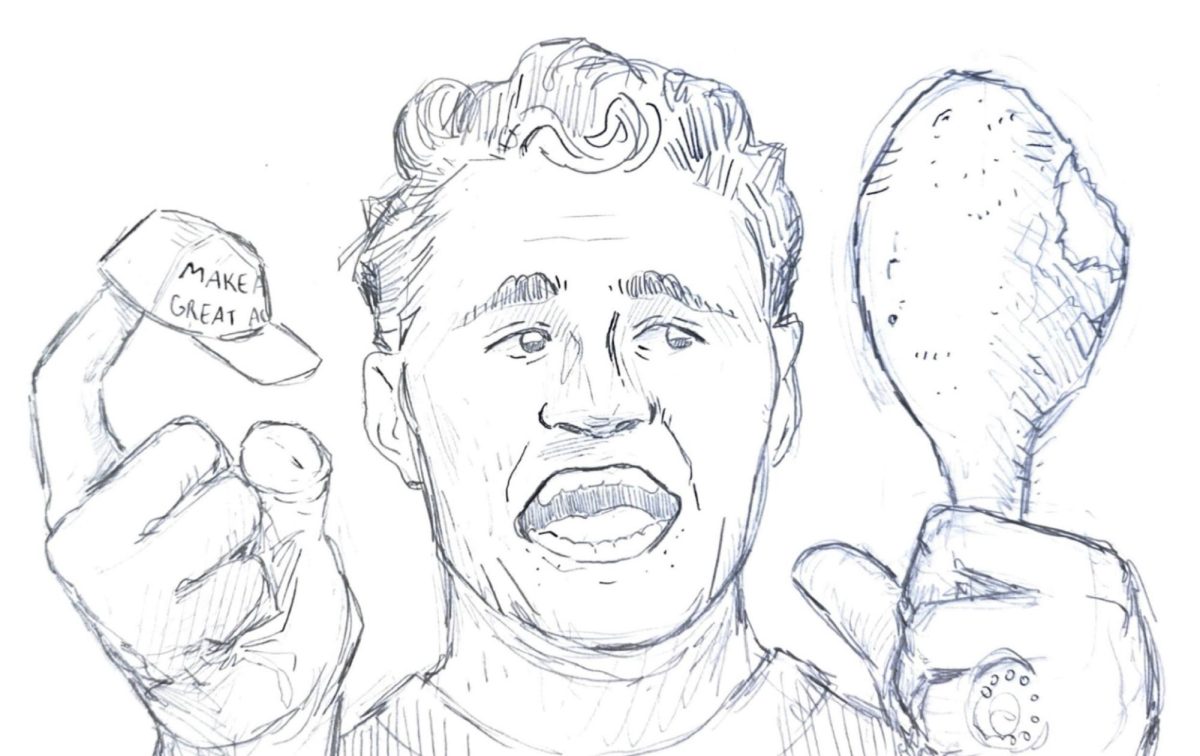On Feb. 25, Aaron Bushnell, a 25-year-old active-duty Air Force service member, enacted what he referred to as an “extreme act of protest.” This event took place in front of the gates at the Israeli Embassy in Washington, D.C. Bushnell doused himself in flammable fluid and lit himself on fire while yelling “Free Palestine” as he burned to death in his military uniform. Bushnell live-streamed the entirety of this process on the popular streaming platform, Twitch.
In the moments leading up to this, Bushnell announced, “I will no longer be complicit in a genocide. I am about to engage in an extreme act of protest. But compared to what people have been experiencing in Palestine at the hands of their colonizers, it’s not extreme at all. This is what our ruling class has decided will be normal.”
Bushnell’s death is a horrific and shocking one, and the idea of extreme self-inflicted pain is one that many of us cannot fathom. As a result, some news outlets are searching for an explanation or justification by pointing to the apparent deteriorated state of Bushnell’s mental health leading up to his death and his radical switch from the conservative beliefs of his upbringing to his new anarchist beliefs. Due to this extreme and seemingly sudden swing, Bushnell’s death has been written off as a suicide by some media outlets. However, I argue that this does not seem to be the case and instances of self-immolation should not be taken lightly or written off. In general, self-immolation is a rare, extreme, and incredibly effective form of protest that comes at the unfortunate expense of the individual carrying it out. Now, in a media-driven world, this most recent act of self-immolation by Bushnell brought immediate and widespread attention to the injustice he was protesting. However, even before social media and the proliferation of the internet, self-immolation had been utilized as a form of protest to demand public attention and action against injustices.
It is important to reflect on the history of self-immolation. The concept can be traced back to the Vietnam War when Thích Quảng Đức was coined the “Burning Monk” after immolating himself in Saigon in 1963 to protest the persecution of Buddhists under the Catholic Vietnamese government. Following his self-immolation, increased pressures on then-president Ngô Đình Diệm resulted in his announcement to reduce the persecution of Buddhists. However, he did not follow through with these promises, and the protests continued. The widely known photo of Đức taken by Malcolm Browne has been seen as a symbol of resistance against injustice in the decades since.
An act of self-immolation also took place on UC San Diego’s campus in Revelle Plaza in protest of the Vietnam War. On May 10, 1970, 23-year-old graduate student George Winne Jr. held a sign reading “In the name of God, end the war” while he lit himself on fire. Witness accounts state that Winne ran across the quad while ablaze and yelled “Stop the war!” repeatedly. Students attempted to save Winne’s life, but the burns took over 95% of his body, and he succumbed to his injuries at Scripps Memorial Hospital. At the time, public unrest around the war was at an all-time high, and demonstrations at UCSD protesting the United States’ continued involvement in the war were common.
It is hard to say whether there was one particular moment or aspect of the war that led Winne to make his decision. Following Winne’s death, rumors spread that he had been especially anxious about his upcoming graduation date and the fact that it may result in his forced enlistment. It is also fair to assume that the building of political tension, the prolonging of the war, and the actions of President Richard Nixon played a significant role in Winne’s actions. About a month before Winne’s death, America believed the war would be coming to a close as Nixon announced the withdrawal of 150,000 troops from South Vietnam. But, shortly after, news was released that the conflict was far from over and would actually be expanding into Cambodia. Across the nation, people hosted protests and sit-ins demanding an end to the war. One demonstration, in particular, resulted in the National Guard shooting and killing four students at Kent University on May 4, 1970, just six days before Winne’s protest.
Ultimately, Bushnell, Winne, and Đức used this method of protest as a means to bring attention to longstanding injustices. At the time of Bushnell’s death, it had been 141 days since the initial Hamas attack on Oct. 7, 2023. Since then, President Joe Biden has said that he hopes to see a ceasefire by March 4. The White House had been working on ceasefire negotiations, and Bushnell’s actions brought immediate and pressing attention to the matter. The conversation picked back up.
However, enacting change from extreme acts is not necessarily promised. This has been a pattern in history; following Đức’s death, President John F. Kennedy announced reforms that intended to pacify Buddhists, though these reforms were not instituted. Nixon’s withdrawal of troops from Vietnam raised hopes of an end to the war, yet, shortly thereafter, he expanded into Cambodia. Thus, it can be argued that other methods of protest may be equally effective, but to write off the sacrificial and impassioned actions of others is unjust.
After Đức’s death in 1963, Buddhist monk Thích Nhất Hạnh wrote that burning oneself is “not to commit an act of destruction but to perform an act of construction … to suffer and die for the sake of one’s people.” Rest in power, Aaron Bushnell. Rest in power, George Winne Jr. Rest in power, Thích Quảng Đức. Let us not forget their names and most importantly, what they stood for and died for.









